If you are looking to purchase an affordable microphone but are unsure about your options – this guide can help. By the end of this article, you will know how microphones work, what types of microphones exist, and which ones are best suited to you and your music. We have also included lists and reviews to bring you the best high quality, cheap studio microphones.
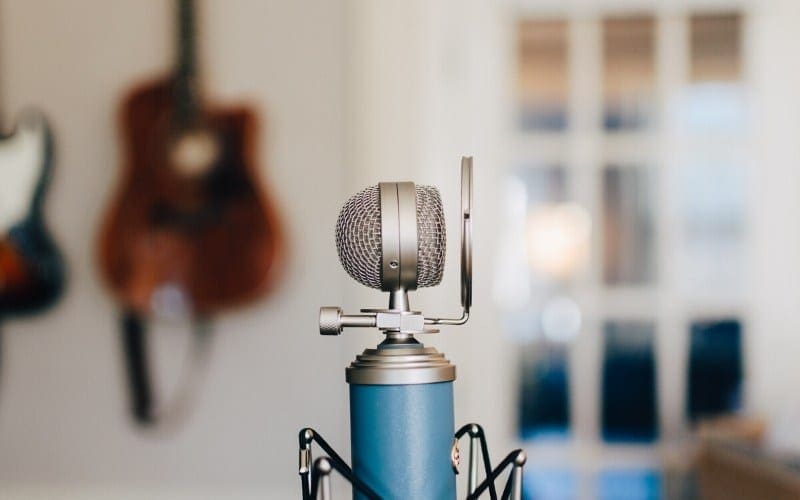
The bottom line is – you don’t have to spend a fortune on audio equipment to get good results. Billie Eilish recorded her 5-time grammy winning debut album in a bedroom studio setup that cost less than 3000 US dollars. Her entire studio setup – that means microphones, studio monitors, instruments, computer and software. It just goes to show you don’t need expensive pro level equipment to get Grammy winning results! By the way, Billie Eilish’s microphone is also included in this cheap microphone list and review (at the end of this article).
What Is A Microphone And How Does It Work?
A microphone is a transducer. A transducer is any device that takes in a form of energy and converts it to electrical energy or vice versa. In this case, a microphone is a transducer that turns acoustic energy into electrical energy.
By that logic, is a speaker just a microphone reversed? Yes, pretty much.
So… how does it work, exactly? When sound is created, the mechanics inside a microphone respond to pressure shifts in the air. The microphone then turns this air pressure into an electrical signal that goes through your interface, into the computer and is then represented digitally as a wavelength in your DAW.
Types Of Cheap Microphones & How They Work
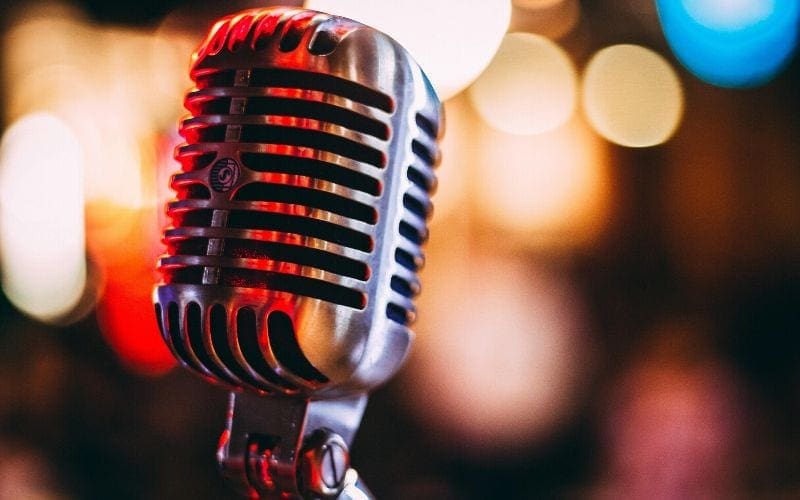
There are 4 types of microphone you can use to record with:
- Large Diaphragm Condenser Microphones
- Small Diaphragm Condenser Microphones
- Ribbon Microphones
- Dynamic Microphones
Condenser Microphones – Small & Large Diaphragms
Condenser microphones are very sensitive to sound, and are often used to record instruments with complex sonic nuances, for example, recording vocals. Part of a condenser’s build involves an air cavity called a diaphragm. Condenser diaphragms can be large or small and depending on their size, they are ideal for recording specific sounds.
For the beginner, or anyone new to recording who just wants to get good results, using a large diaphragm condenser is a safe bet. And so, large diaphragm condensers have been included in this upcoming list to bring you the best cheap microphones for singing!
Ribbon Microphones
Ribbon microphones are built using old technology. They have a unique sonic quality to them. They’re delicate, expensive and aren’t on the list for this reason!
Dynamic Microphones
Dynamic microphones are rugged and durable with basic mechanics to pick up sound. They are used to record loud sounds like drums, guitar amps, and instruments in a live setting. These are very affordable and are included in our list.
The type of microphone you use will depend on what you want to record. If you are a guitarist wanting to record, a dynamic mic like an SM57 placed in front of your amp is a good choice. As a vocalist, you will want to use a condenser mic like a Rode NT1 A to pick up the unique sonic characteristics of your voice. For producers, you might want to purchase a condenser and a dynamic mic, so that you have appropriate microphones for every sound you want to record.
Tech Specs
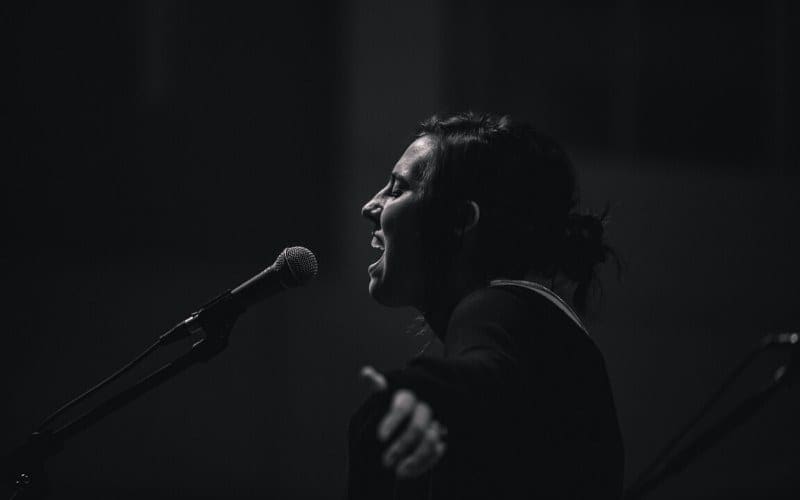
Having to evaluate technical specifications can be daunting, especially if you are a beginner. It can be very off-putting and overwhelming when all you want to do is buy a decent product that does a good job.
This section will cover the important and fundamental technology specifications you need to know about in advance when purchasing your microphone. Let me break down some of the terms and phrases that you will find on all microphone descriptions:
Polar Pattern
This refers to how the microphone picks up sound, and from which direction. There are four types of polar pattern: Cardioid, Hyper-Cardioid, Omnidirectional and Figure of 8. A quick search in Google will show you images of the different types of polar patterns.
Top Tip: You are almost always going to want to use a microphone with a Cardioid or Hyper-Cardioid polar pattern. So, look out for the correct polar pattern!
Frequency Response
This will tell you what range of frequencies a microphone picks up. Hertz (Hz) is the unit we use to describe the frequency of a propagating soundwave. Human beings have a hearing range of 20 – 20,000 Hertz (Hz). Cheap microphones will have varying frequency responses. Some might have a frequency response of 50Hz-18,000Hz, and others might have similar responses.
As a rule, purchasing a microphone with a 20Hz – 20,000Hz response is always a good decision. You won’t ever have to worry about your mic not picking up the full sound of your vocals or the low end of your bass.
48V / Phantom Power
48V stands for 48 Volts. ‘Phantom Power’ is just another phrase for 48 Volts. The 48 Volts is the charge of electricity that all condenser microphones need to engage their diaphragm and pick up sound waves. This is a specification you will only see on condenser microphones, as dynamic microphones do not need an electrical charge.
High Pass Filter
This is a feature included on condenser microphones that gives you the option to filter out low frequencies. It is usually a switch or button on the microphone. If you see something like ‘High Pass Filter: 100Hz’, this just means the microphone comes with the option to cut out any frequencies below 100 Hz. ‘High Pass Filter’ can be abbreviated to ‘HPF’, or be called ‘Low Cut’.
Pad
Another common feature on condenser microphones. This gives you the option to reduce a signal’s output. You might see something like ‘Pad: -10 dB’, which means that if you engage the pad, it will reduce the signal by 10dBs. Pads come in useful when you are recording extremely loud sounds.
There are a few other tech specifications. But the ones mentioned above, are the most important, and the ones that you should be sure of when purchasing your microphone.
The Best Cheap Microphones
So, what are some of the best cheap microphones?
Well, there is a lot of subjectivity involved in judging the performance of a microphone. If you ask a recording engineer what the best cheap microphone is, they may tell you that there isn’t one. There are so many variables to consider!
To clarify, cheap doesn’t mean bad quality. There are bad-quality microphones out there, but we have made sure that they do not appear on this list! In the context of this article, cheap means affordable products suited to small budgets. All of these microphones are manufactured by popular and reliable audio-production brands.
Here goes, in order of least expensive to most:
Behringer C-1U Condenser USB Microphone
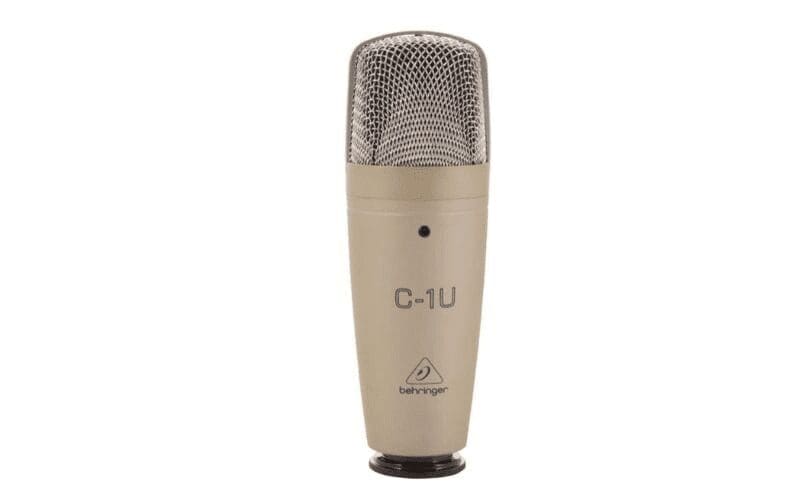
- Priced at around £50-60.
- A USB Microphone, meaning that it plugs straight into your computer.
- Behringer are well-known for making affordable audio equipment
- Rating: 3.5 / 5. This is a good cheap ASMR microphone, with good quality for its price, and great to start you off!
Cheap Microphones – AKG P120
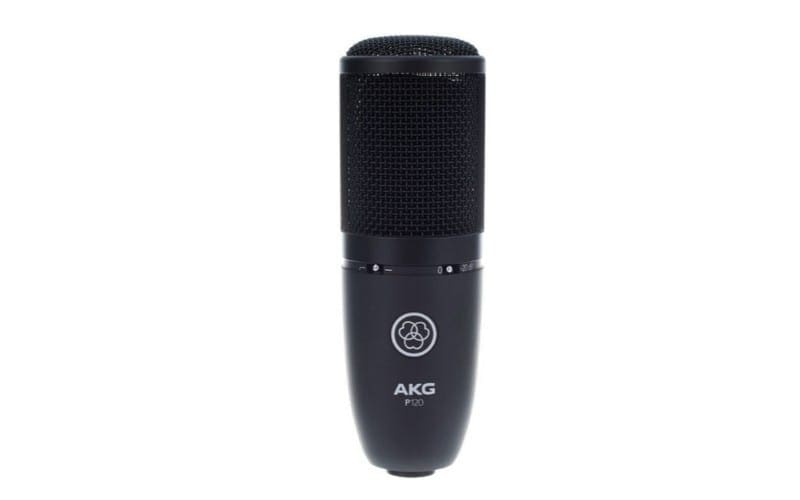
- Priced at around £70-80.
- A large diaphragm condenser, as mentioned earlier.
- AKG are famous for their high-end studio and live products.
- Rating: 5 / 5. The best microphone for cheap is made by a trusted, big-name brand who are famous for its high-caliber products.
Audio Technica AT2020
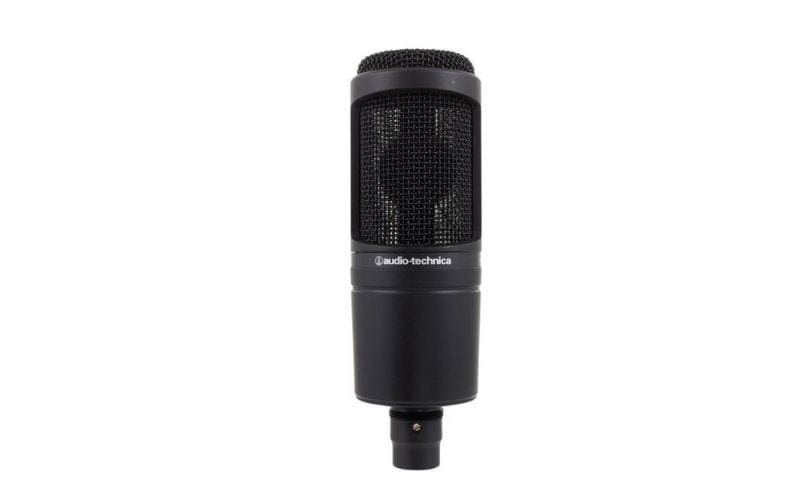
- Priced at around £80-90.
- This is the Billie Eilish microphone we mentioned earlier! A large diaphragm condenser, also.
- Rating: 5 / 5. Audio Technica are a trusted brand that you can always expect good things from.
- This is the best cheap microphone for gaming.
Cheap Microphones – Shure SM57
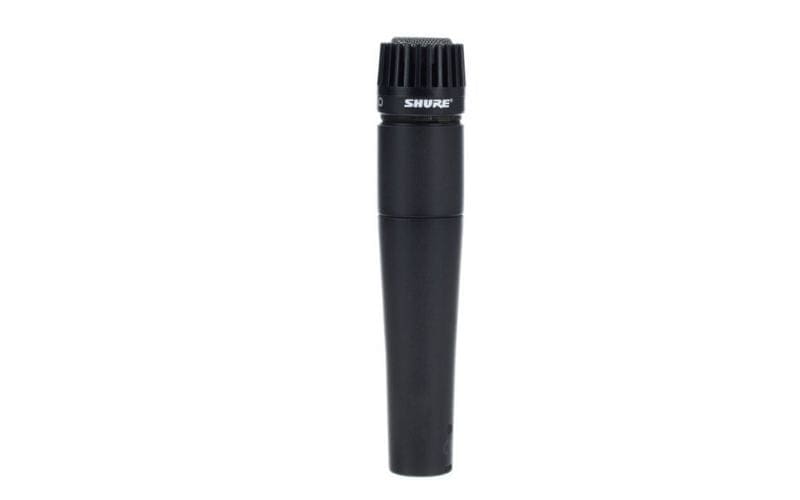
- Priced at around £85-100.
- Probably the most famous dynamic microphone!
- Perfect for recording instruments and has been used for decades.
- Rating: 5 / 5 – it is truly iconic.
- This is a good cheap condenser microphone.
Shure SM58
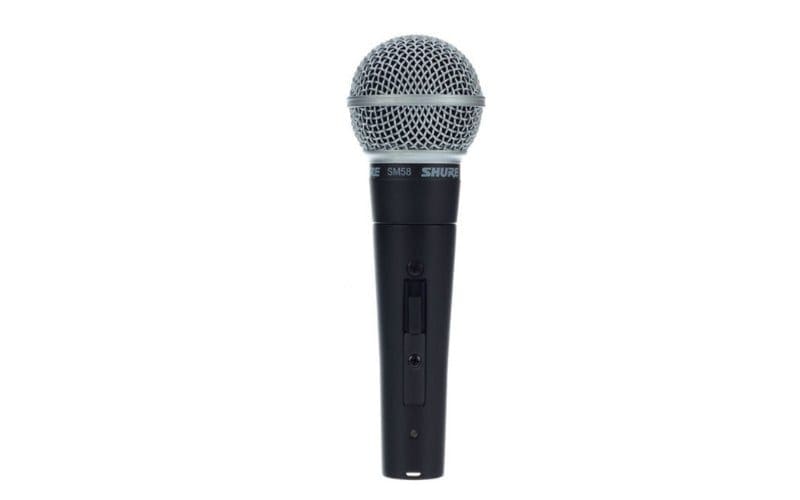
- Priced at around £90-110.
- A dynamic microphone, great for vocals in a live setting.
- Great for recording loud sounds like amps and drums.
- 5 / 5. Its popularity says it all, the best cheap microphone and it is always in someone’s hand or mic stand, being used on stage!
Cheap Microphones – AKG C3000
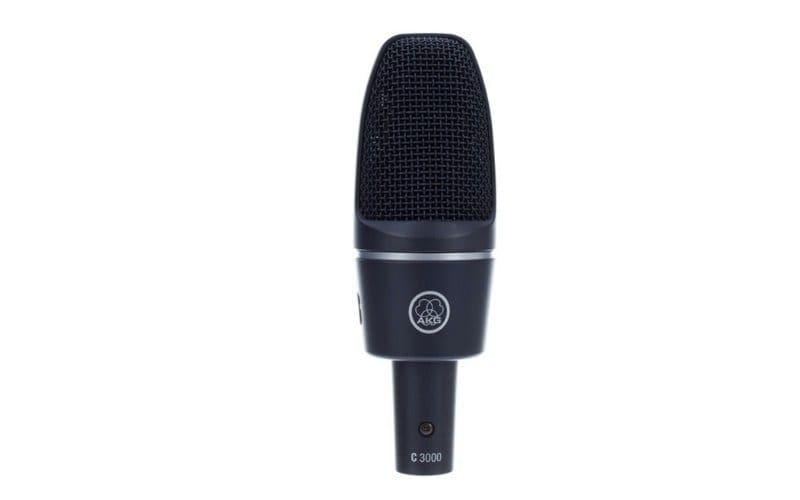
- Priced at around £130-150.
- Another affordable AKG large diaphragm condenser microphone.
- Performs very well in the studio or on stage.
- 5 / 5. It is high-quality, affordable, versatile, and the best cheap podcast microphone.
Rode NT1-A
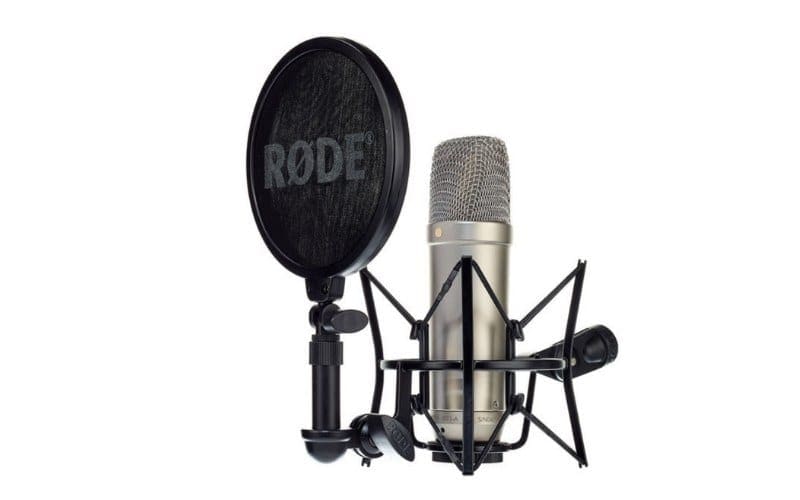
- Priced at around £160-180.
- This large diaphragm condenser microphone is known as THE home studio mic.
- It is great for vocals and acoustic instruments.
- Rating: 3.5 / 5. There are cheaper microphones that rival this one, but it is still a great mic!
Cheap Microphones – Blue Spark SL
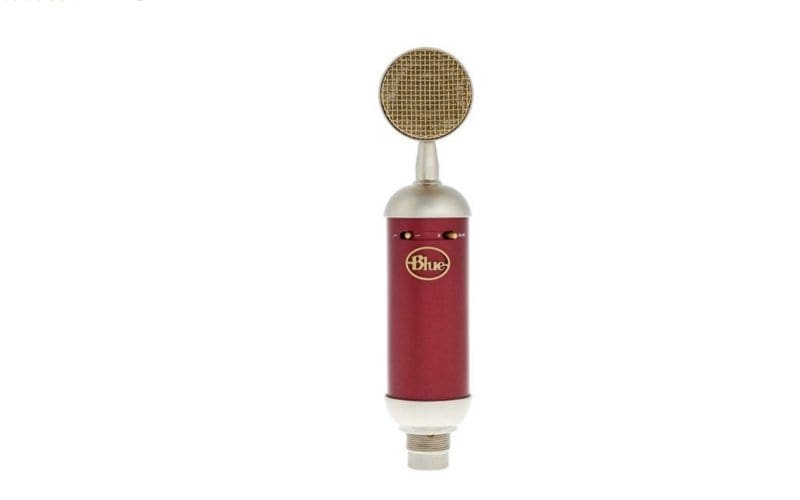
- Priced at £180+
- Large diaphragm condenser.
- Great for recording vocals, instruments and miscellaneous sounds.
- Very responsive and sensitive and high quality for the price.
- Rating: 5 / 5. Professional results at an affordable price!
- One of the best cheap microphones for singing
Purchasing Cheap Microphones – Things To Remember
The only thing that you truly need to know when purchasing your microphone is whether you want a condenser or dynamic. So, think about what kind of sounds or instruments you plan to record. Also, learn to read the important tech-specs like polar pattern, frequency response, high pass filter, 48V and pad. If you can understand that, it is very difficult to choose the wrong type of mic.
Always do your research! Look at reviews, and Youtube video reviews, ask any audiophile friends and browse a few audio forums to find the information you need to make the correct purchase decision.
Cheap doesn’t mean bad. Audio technology is so sophisticated that it has blurred the lines between amateur and professional quality products these days. Consequently, audio equipment is now very affordable. We hope that you find yourself the best cheap microphone and can get recording some beautiful sounds as soon as possible!
Now that you have hopefully found some cheap microphones to purchase, we can’t wait to hear the amazing vocals and songs that will be recorded!










